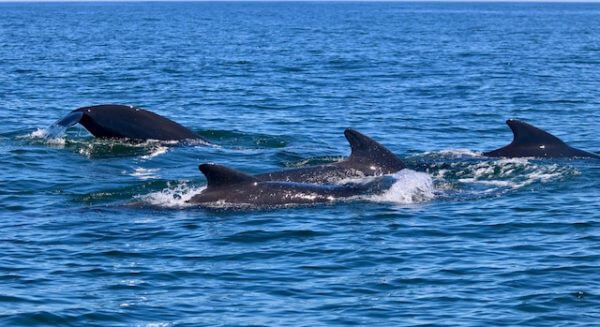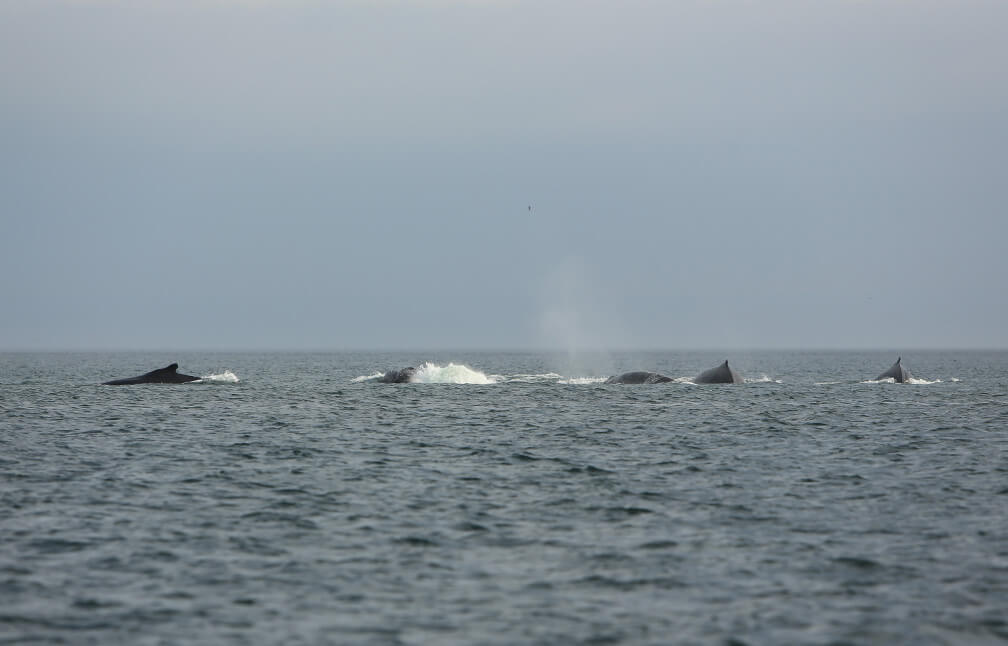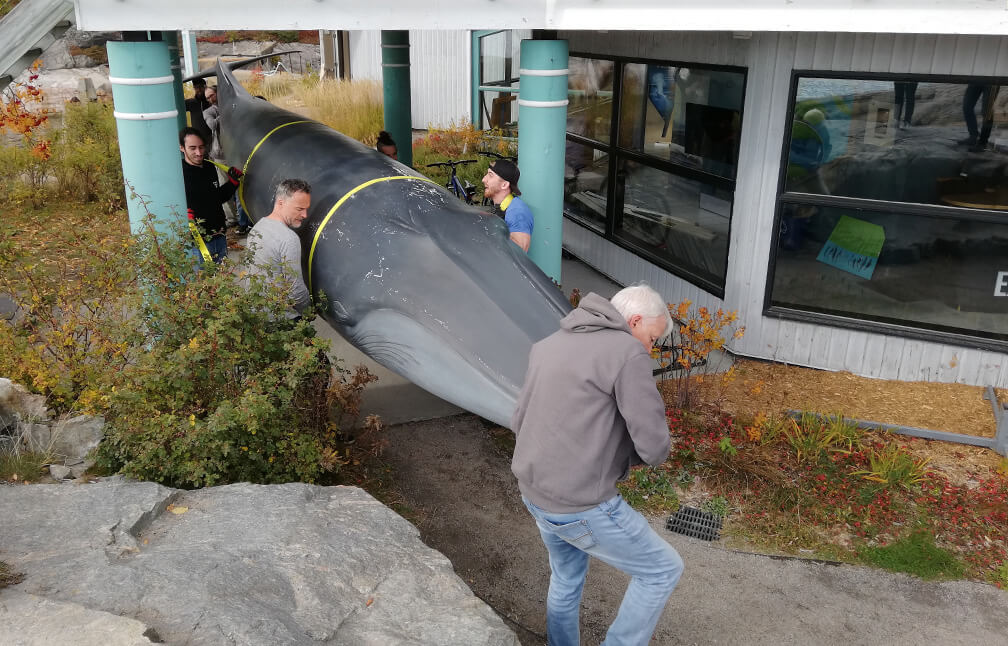Two observers, one in Les Escoumins (north shore), the other in Baie-des-Sables (south shore), asked the following question this week: “Is it possible that I might have seen long-finned pilot whales?” The sighting of marine mammals with black backs – in one case a group of about fifty animals, in the other case a lone individual – led them to consult their field guides. But without a photo or video, it’s impossible to confirm what they observed.
Long-finned pilot whales are regular seasonal visitors to the Gulf, but it is quite rare to observe them in the Estuary. They are recognized by their large dorsal fin positioned close to the blowhole, their black back with a white spot behind the dorsal fin and their 4-to-5-metre long body, making them slightly larger than a beluga. They generally live in a family groups comprising 10 to 20 individuals and can sometimes gather in herds numbering in the hundreds!
Still plenty of giants in the Estuary and the Gulf
“We’ve been seeing a lot of blue whales,” says one observer from Port-Cartier. He tallied about ten individuals in the sector during his trips out to sea last week. Although humpbacks appear to have vacated the area, fin whales are still present. “Most are solitary, but we have been seeing a few in pairs, as is often the case in autumn. But what surprised me was to see the tail of one of the fin whales,” he says. Unlike humpbacks, fin whales tend not to show their tails before they dive. Back on shore, he admires the comings and goings of minke whales.
In the Gaspé, whalewatching boats and other pleasure craft have been docked for the winter. The last few days have been replete with sightings of humpbacks, fin whales and blue whales against a backdrop of colourful foliage. From the Penouillebeach, harbour seals stick out their dog-like heads. At the Haldimand beach, it’s the more equine-like grey seal heads that are poking above the water surface.
On October 10, off Baie-des-Rochers, a herd of about 70 to 80 belugas is active at the surface. Among them are four café-au-lait-coloured newborns. With binoculars, one can sometimes observe the dark circle around their eyes or their blowhole, which is a sign of their young age.
On October 13, humpback whales inspire a photographer, who shoots five individuals swimming side by side. During his cruise in the Saguenay-St. Lawrence Marine Park, he also observed fin whales, minke whales and grey seals.
In Tadoussac, passers-by spotted a fin whale from Rue de la Cale-Sèche (Translator’s note: the road where the village’s dry dock is located)! The half-size replica of a fin whale was removed from the ceiling of the Marine Mammal Interpretation Centre and transported to a warehouse. The Centre will be expanded in the coming weeks to make way for new skeletons and a revamped exhibit! Come visit us in 2020!









